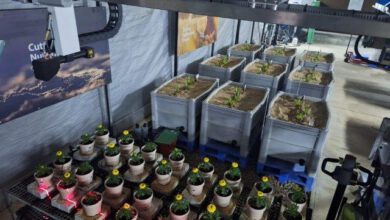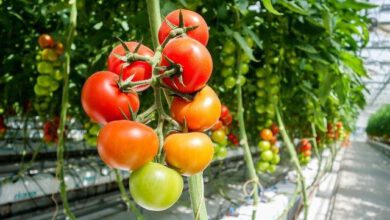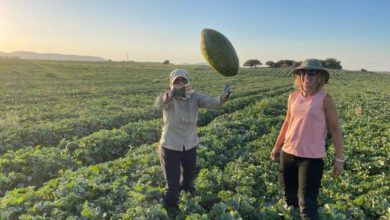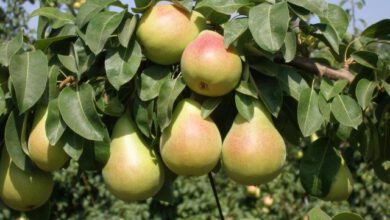Herbicide-Resistant Weeds Jeopardize the Agricultural Sustainability
Growers must control weeds that compete with crops on the available resources such as water, nutrients and sunlight
Professor Baruch Rubin*, rubin@mail.huji.ac.il

* RH Smith Institute of plant Sciences and Genetics in Agriculture, Faculty of Agriculture, Food and Environment, The Hebrew University of Jerusalem, Rehovot, Israel
Growers must control weeds that compete with crops on the available resources such as water, nutrients and sunlight, resulting in 35 to 100% yield losses. Proper weed management is currently based on cultural and chemical methods, whereas biological control methods are employed only in specific cases.
Chemical weed control applied together with a limited number of cultural methods is currently the most common practice for minimizing the impact of weeds on crop productivity. Over-reliance of farmers on herbicides as the main technology for combating weeds, enhanced the evolution of numerous weed species which are no longer controlled by using herbicides. These herbicide-resistant weeds (HRW) include annual and perennial weeds, grasses and broad-leaved plants, threatening the sustainability of the agroecosystem all over the world.
Herbicide resistance is defined as the inherited ability of a plant to survive herbicide application to which the wild-type was susceptible. Individual HRW occur naturally within a population at a very low frequency (a few plants within a population of trillions of plants), but their share in the weed population increases due to a high selection pressure employed by a repeated application of the same herbicide,at high rates and at the same field (monoculture). Lack of proper rotation of crop and herbicides, allows these few resistant plants to survive, reproduce and become visible within 3 to 15 years and later on become dominant in the field.
Currently, Dr. I. Heap, who compiles the “International Herbicide-Resistant Weed Database (https://weedscience.com/Home.aspx) reports on 266 weed species (153 dicots- and 113 monocots), that have evolved globally, with resistance to the majority of the known herbicide sites of action. Globally, the first case of herbicide-resistant weed species came in 1970 from Washington State (Ryan, Weed Science, 1970, 18:614-616) reporting Common Groundsel (Senecio vulgaris) as resistant to simazine and atrazine, both are triazine herbicide known as inhibitors of the electron transport chain in Photo System II (PSII).
So far, more than 100 weed species were reported as resistant to PSII inhibitors. The most prevalent resistance has evolved to Aceto-Lactate Synthase (ALS) inhibiting herbicides (~160 weed species) followed by approximately 50 grass weed species that evolved resistance to Acetyl CoA Carboxylase (ACCase) inhibitors. A similar number of weed species was reported as resistant to glyphosate, a widely-used non-selective herbicide, that provides a unique control of a wide range of weeds in arable and perennial crops as well as in non-agricultural areas. A dramatic increase in the number of glyphosate-resistant weeds was observed since 1996, following the introduction of the genetically-engineered glyphosate-resistant crops (Roundup Ready®) (Figure 1).
.jpg)
Figure 1. Number of resistant species for several herbicide-sites of action (after Heap, 2022)
In Israel, we identified so far 36 HRW species, which is a world record of HRW species per 1000 km2of cultivated land, as compared to 0.038in the USA and 0.021 in Australia (Table 1). The large number of weed species that evolved herbicide resistance in Israel, may be attributed to the high intensity of land-use (two and even three crops per year in the irrigated fields), the intensive use of soil fumigants which are applied at high doses (e.g., >500 kg ha-1), and the over reliance on chemical weed control that stems from the severe lack of manpower.The recent ban of numerous herbicides by the Israeli authorities, reduces the arsenal of herbicides candidate for rotation is contributing to the high number of HRW in the country.
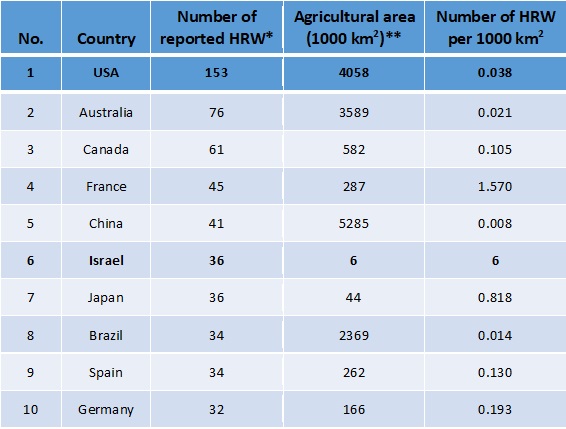
Table 1. The ‘Big Ten’: Number of HRW species reported in 10 leading countries as related to the cultivated land.
*Heap, 2022; **World Bank, 2022.
The evolution of HRW in Israel affects arable crops such as wheat infested with HR broad leaved weeds such as Chrysanthemum coronoraium, that evolved resistance to most ALS inhibiting herbicides (Figure 2), and grass weeds such as Lolium rigidum, Phalaris paradoxa and P. minor that evolved multiple-resistance to all registered ACCase-and most ALS- inhibiting herbicides (Figure 3).
Of a particular importance are broadleaved HRW such as Amaranthus palmeri that infests summer crops such as cotton, sunflowers and watermelon, (Figure 4). This vigorous dioicous weed that evolved resistance to ALS-inhibiting herbicides, effectively competes with the crop plants, resulting in a severe yield loss.
.jpg)
Figure 2. Wheat field in the Western Negev region in Israel heavily infested with ALS-resistant Chrysanthemum coronoraium.
.jpg)
Figure 3. Wheat (left) and onions (right) fields infested with ACCase-resistant Phalaris paradoxa.
As in the USA, glyphosate-resistant weeds identified in Israel are of extreme importance, endangering the future use of this ultra-popular herbicide and the sustainability of many crops. Three major weeds namely: Lolium rigidum, Conyza bonariensis, and Amaranthus tuberculatus exhibiting glyphosate-resistance were confirmed in Israel (Figure 5). These glyphosate-resistant weeds are widely distributed in all regions, all types of perennial and annual crops and vegetables.
.jpg)
Figure 4. ALS-resistant Amaranthus palmeri infesting cotton (above), sunflowers (below, left) and watermelon (below, right).
.jpg)
Figure 5.Glyphosate-resistant Lolium rigidum (left) and Conyza bonariensis (right).
Reduced or lack of plant response to herbicides (resistance) may occur due to a genetic alteration of the herbicide-binding site (TSR), such as point mutation(s) that modify the sequence of amino acids in the target protein or overexpression of the target enzyme. The presence of such a point mutation results in changes in the structure of the herbicide-binding niche, hence reducing or even preventing the herbicide molecules from binding to the target site resulting in control failure. The inheritance of TSR is usually controlled by a single or two dominant nuclear genes, however, plants that evolved resistance to PSII inhibiting herbicides, are maternally-inherited.
Other resistance mechanisms are based on a non-target site (NTSR) modification such as reduced herbicide uptake and translocation or enhanced bio-detoxification of the active herbicides to none- or less-toxic products before reaching the target site. This complex resistance mechanism is particularly dangerous due to the fact that it may lead to multiple-resistance by endowing resistance to herbicides that belong to different chemical groups or inhibiting different crucial plant growth processes.
In the absence of herbicide application, HRW may exhibit reduced biomass and seed fecundity relative to the susceptible wild-type (ecological fitness or resistance penalty), which may reduce their competitive ability with the wild type. Hence, when competing with the wild type population in the absence of a selector (herbicide), their proportion in the weed population will slowly decrease until almost complete disappearance. Such a phenomenon has occurred in recent years with the triazine-resistant weeds that were almost eradicated in Europe following a regulatory ban on the use of these groups of chemicals.
Currently, resistance traits were confirmed globally, to most known herbicide sites of action, in 71 countries in all continents. HRW are causing huge economic and environmental damage, posing a great challenge to scientists to develop and apply cost-effective and environmentally-accepted weed management practices.
The introduction of new technologies such as remote sensing from satellites, aircrafts and drones, precision weed identification and precise herbicide application as well as robotics, provide the farmer with new tools to be incorporated in the current weed management practices. In arable crops, weed seed destruction and removal during harvest (HWSC) is becoming more popular in Australia, North America and in Europe (and in advanced experimental stage in Israel) as a new approach to combat HRW. In order to secure the future food supply, there is an urgent need to wisely integrate these new technologies along with a rational use of herbicides as essential parts of the crop management.

